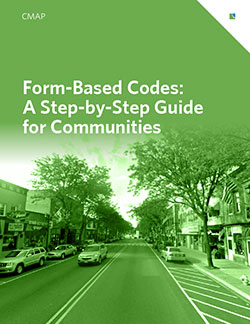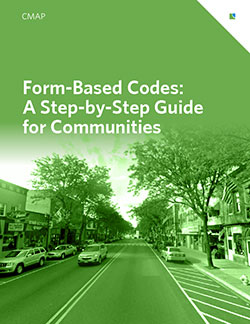On May 16, 2014, CMAP and the Form-Based Codes Institute held a free workshop on form-based codes, targeted to municipal staff and elected officials. Attended by over 50 participants, the workshop featured local and national experts who explained how this different approach to zoning can help communities reach their economic revitalization goals (presentations are available below).
 |
Tony Perez Director of Form-Based Coding Opticos Design Berkeley, CA |
Form-Based Zoning vs. Conventional Zoning (65MB pdf) |
 |
Leslie Oberholtzer Principal CodaMetrics Chicago, IL |
Form-Based Codes: Applicability to Our Region (15MB pdf) |
 |
Geoffrey Ferrell Principal Ferrell-Madden Washington, DC |
Form-Based Codes: Completing, Adopting and Administering the Code (Peoria, IL case study) (4MB pdf) |

